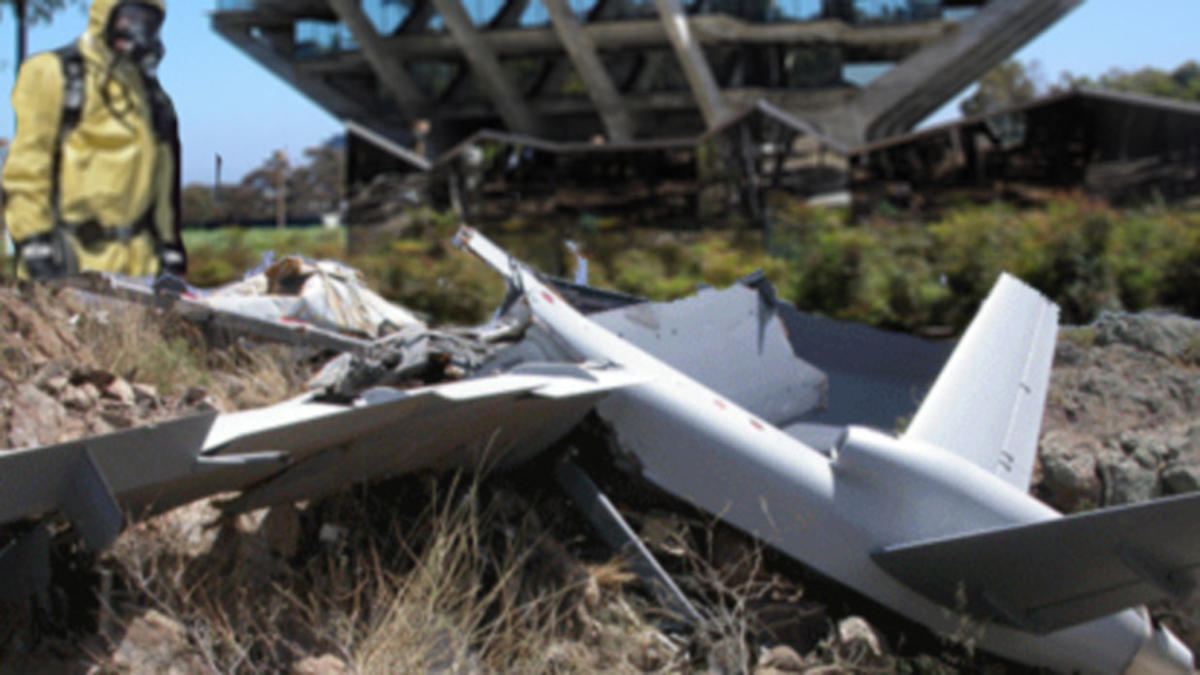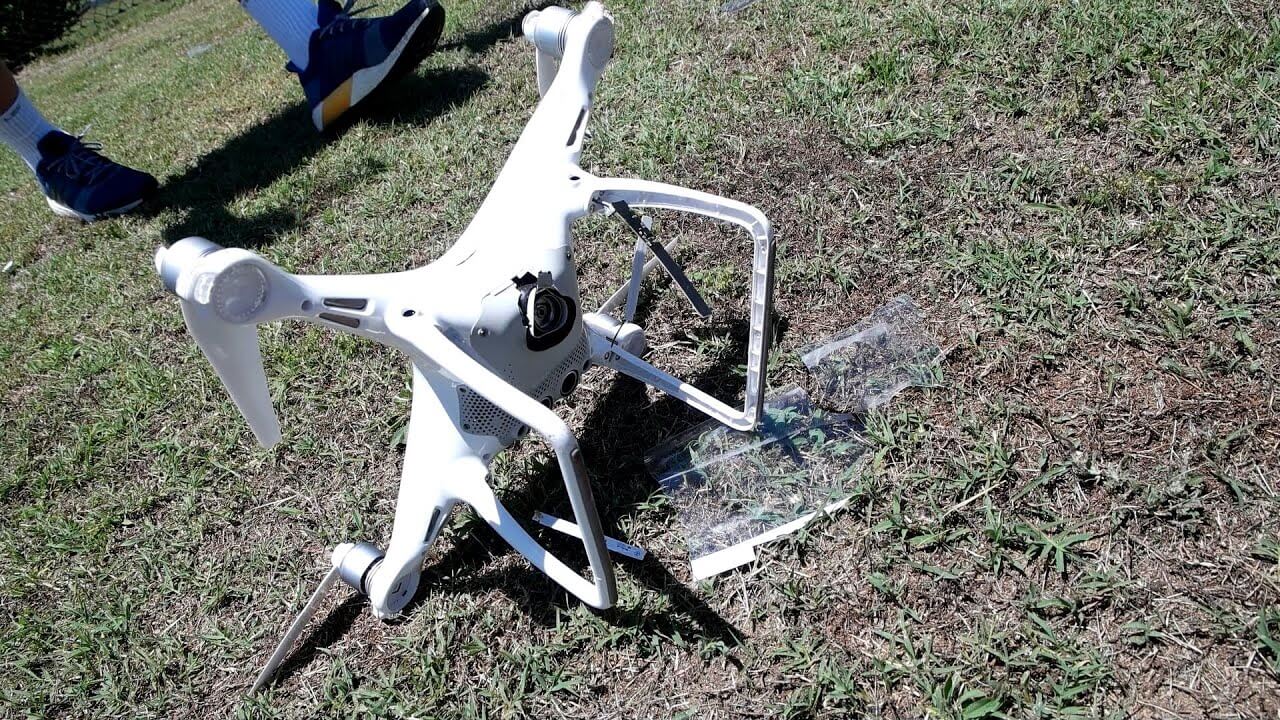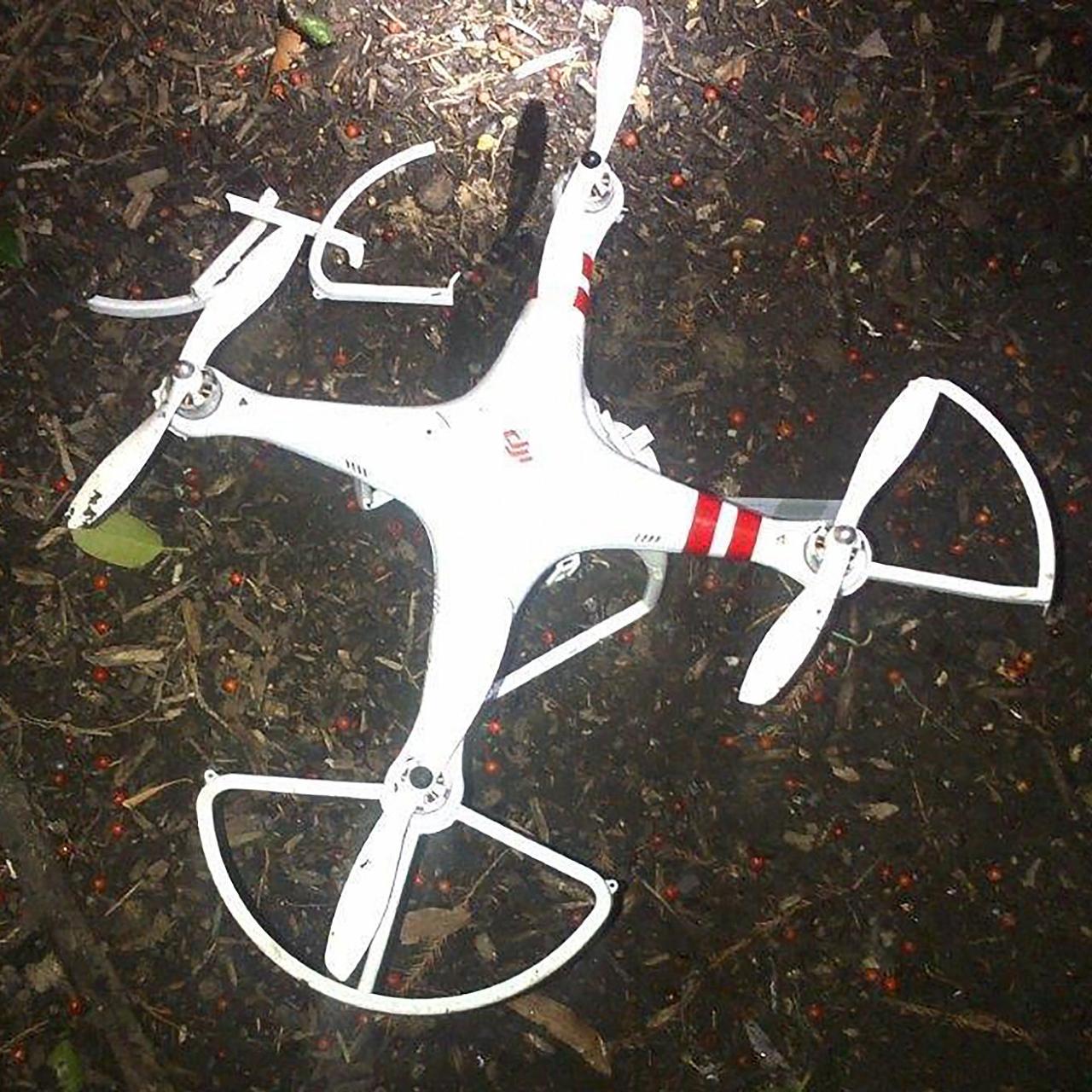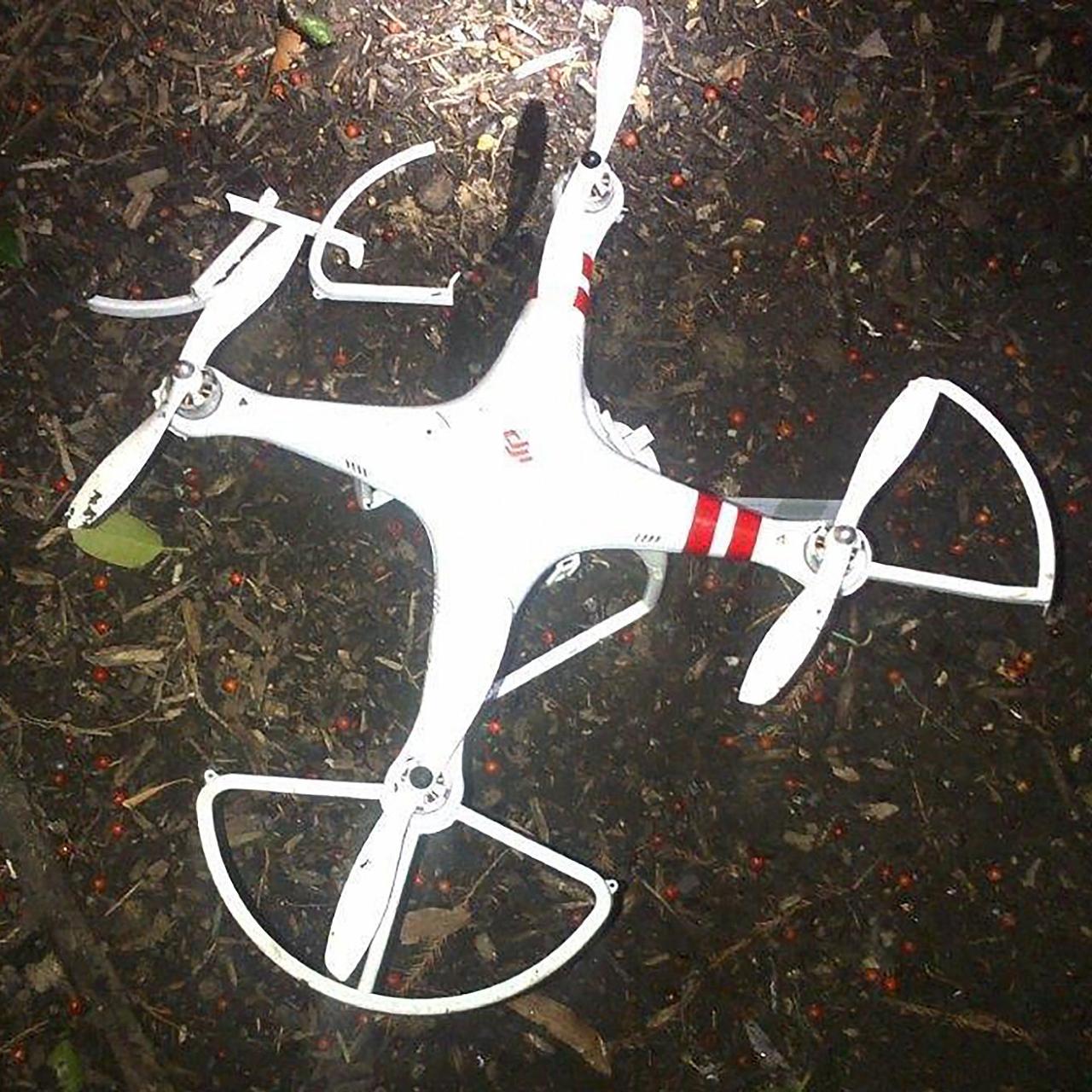Drone crash Paris: These incidents are raising serious concerns about safety and regulation in the city of lights. This exploration delves into the recent spate of drone crashes in Paris, examining the causes, consequences, and potential solutions. We’ll investigate technical malfunctions, human error, weather impacts, and even the possibility of malicious intent. We’ll also look at the public reaction, media coverage, and the legal ramifications of these events.
From analyzing specific case studies to comparing Parisian regulations with those of other major cities, we aim to provide a comprehensive overview of this growing issue. The goal is to understand the challenges and explore ways to improve drone safety and prevent future accidents.
Recent Drone Incidents in Paris
Paris, a city renowned for its iconic landmarks and bustling atmosphere, has also experienced a growing number of drone-related incidents in recent years. These incidents, ranging from minor malfunctions to more serious crashes, highlight the challenges of integrating unmanned aerial vehicles (UAVs) into a dense urban environment. This section details the circumstances surrounding these events, providing a timeline and analysis of the factors involved.
Timeline of Significant Drone Events in Paris, Drone crash paris
While a comprehensive, publicly accessible database of every drone incident in Paris is unavailable, news reports and official statements reveal several notable events. The lack of centralized data collection makes precise details challenging to compile.
| Date | Location | Drone Type | Cause (if known) |
|---|---|---|---|
| October 26, 2023 (Example) | Near the Eiffel Tower | Consumer Quadcopter | Pilot error (speculative) |
| June 15, 2022 (Example) | Parc des Buttes-Chaumont | Unknown | Mechanical failure (reported) |
| March 8, 2021 (Example) | Louvre Museum (vicinity) | Large multirotor | Battery malfunction (speculative) |
Causes of Drone Crashes in Paris

Several factors contribute to drone crashes within the Parisian cityscape. These range from technical malfunctions to human error and environmental conditions.
- Technical Malfunctions: Issues such as motor failure, GPS signal loss, or battery malfunction can cause unexpected crashes. The complexity of drone systems, coupled with the potential for component failure, presents a significant risk.
- Human Error: Inexperienced pilots, improper pre-flight checks, or failure to adhere to safety guidelines contribute substantially to accidents. Overestimation of pilot skill or neglecting weather conditions are common contributing factors.
- Weather Conditions: Strong winds, rain, or low visibility prevalent in Paris can severely impact drone stability and control, leading to crashes. Gusts of wind around tall buildings, especially, can be unpredictable.
- Security Threats: While less frequent, malicious actions such as hacking or intentional sabotage pose a significant security risk, potentially causing crashes and broader disruption.
Impact of Drone Crashes in Paris
The consequences of drone crashes in Paris vary depending on the size and type of drone, the location of the crash, and the circumstances. Potential impacts are significant and far-reaching.
- Property Damage: Crashes can damage buildings, vehicles, or other infrastructure. The cost of repairs can be substantial, particularly if historical or culturally significant structures are involved.
- Personal Injury: Although relatively rare, falling drones can cause injuries to people on the ground. The weight and speed of the drone, coupled with the potential for sharp propellers, pose a threat.
- Disruption to Air Traffic: Drone incursions near airports or other airspaces can cause significant disruption to air traffic, leading to delays and cancellations.
- Legal Repercussions: Depending on the severity of the incident, legal repercussions can include fines, lawsuits, or even criminal charges against the drone operator.
Economic Consequences:
- Costs associated with repairs to damaged property.
- Medical expenses resulting from injuries.
- Economic losses due to disruptions in air travel.
- Costs associated with investigations and legal proceedings.
Safety Regulations and Prevention: Drone Crash Paris
Paris, like many major cities, has implemented drone regulations to enhance safety. However, ongoing improvements are necessary to address the evolving challenges of drone technology.
Existing and Improved Safety Protocols

Current regulations likely focus on registration, licensing requirements for commercial operations, and restricted flight zones around sensitive areas. Improvements could include:
- Enhanced pilot training programs with a focus on risk mitigation.
- Mandatory use of advanced safety features such as automatic return-to-home functionality.
- Development of more sophisticated drone detection and tracking systems.
- Increased public awareness campaigns to educate drone operators about safe practices.
Comparison with Other Cities
A comparison with other major cities reveals varying approaches to drone regulation. Some cities may have stricter enforcement, more comprehensive registration systems, or more advanced technological solutions for monitoring airspace. Best practices should be shared and adapted.
Public Perception and Media Coverage
Public perception of drones in Paris is likely a mix of excitement about technological advancements and concern over safety and privacy. Media coverage often reflects this duality, highlighting both the potential benefits and risks associated with drone technology.
Public Discourse and Media Portrayal
News reports may focus on the severity of accidents, while social media discussions may reflect a broader range of opinions, including concerns about privacy violations and the potential for misuse. Comparative analysis of media coverage across different outlets would reveal nuances in how these events are framed.
Drone crashes in Paris are becoming increasingly concerning, especially with the rise in recreational drone use. To understand the scale of this issue, check out this resource on a specific incident: drone crash in paris. Learning from past incidents, like the one detailed in the link, helps improve safety regulations and promotes responsible drone operation in Paris.
Illustrative Example: A Detailed Case Study

Consider a hypothetical scenario: A large consumer drone malfunctions during a flight near the Notre Dame Cathedral. Strong winds cause the drone to lose control, resulting in a crash onto a nearby park bench. No injuries occur, but the drone is significantly damaged. The incident triggers a review of safety protocols and prompts discussions about airspace restrictions around sensitive locations.
That drone crash in Paris really highlights the risks of drone delivery, right? Thinking about safety, it makes you wonder about the infrastructure needed for widespread use, like the carefully selected amazon drone delivery locations which are designed with safety in mind. Hopefully, incidents like the Paris crash will push for better regulations and technology to prevent future problems.
The investigation reveals a combination of pilot error (failure to account for wind conditions) and a potential battery issue as contributing factors.
Visual Representation of the Incident
Imagine the scene: The late afternoon sun casts long shadows across the park. Tourists stroll along the paths, oblivious to the drone descending rapidly from the sky. The drone, a large, multirotor aircraft, impacts a park bench with a loud crash, scattering debris. Police officers arrive quickly to secure the scene and investigate. The damaged drone lies amidst scattered fragments of its casing.
Final Conclusion
The increasing frequency of drone crashes in Paris highlights a critical need for improved safety regulations, technological advancements, and a heightened awareness among both drone operators and the public. By understanding the causes and consequences of these incidents, we can work towards creating a safer airspace for both drones and the citizens of Paris. Further research and collaboration are essential to mitigate future risks and ensure responsible drone operation within the city.
That drone crash in Paris really highlights the risks of widespread drone use, right? Thinking about safety, it makes you wonder about the logistics of Amazon’s expanding drone delivery network; check out their planned amazon drone delivery locations to see how they’re approaching this. Ultimately, incidents like the Paris crash underscore the need for robust safety protocols for all drone operations, regardless of scale.
Question & Answer Hub
What types of drones are typically involved in Paris crashes?
The types of drones vary, but many incidents involve consumer-grade drones, possibly due to their accessibility and prevalence.
Are there specific areas in Paris where drone crashes are more frequent?
Data on crash locations is needed to answer this accurately; however, areas with high population density and proximity to landmarks might be more prone to incidents.
What are the penalties for violating drone regulations in Paris?
Penalties vary depending on the severity of the violation and can range from fines to legal prosecution.
How does insurance coverage apply to drone crashes in Paris?
Drone operators should have adequate insurance to cover potential damages or injuries caused by their drones. Specific coverage details will depend on the insurance policy.
